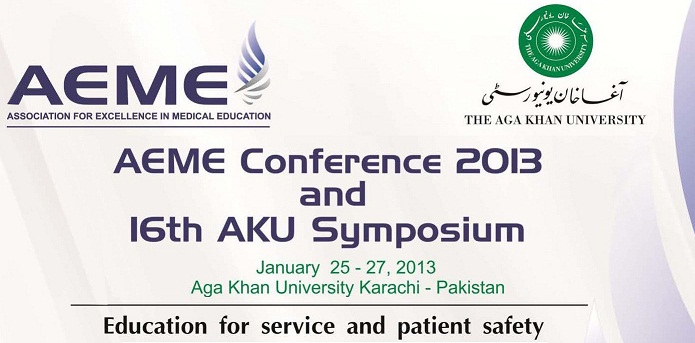Day 1 : Poster Presentations (Theme: Curricular Innovations)
Curricular enhancement based on targeted needs assessment: experience of the undergraduate infectious disease clerskship at the Aga Khan University Medical College
Location
Auditorium Pond Side
Start Date
26-1-2013 10:30 AM
Abstract
Background: Infectious diseases (ID) are one of the most important causes of morbidity and mortality in developing countries. Despite this, ID teaching tends to be unstructured in most undergraduate medical curricula. Bridging between the preclinical and clinical years can also be a problem.
Methods: Using Kern\'s Six Step Approach, the ID clerkship curriculum was evaluated. The learning objectives, teaching and learning strategies and student assessments were reviewed. Student and faculty feedback were also included to perform a targeted needs assessment.
Results: In our institution, a 2 week ID /microbiology clerkship was present in the 3rd year of MBBS training; the students spent the mornings in microbiology lab and afternoons on ID rounds. This rotation was adjacent to a 4 week Internal Medicine rotation. Microbiology teaching in the lab was well-received by the students. However, major discrepancies were identified between learning objectives, the learner level, the complexity of ID cases and student assessment. Feedback suggested that students were unable to follow the complex ID consult patients and that the brief rotation precluded in-depth teaching. The rotation was restructured and integrated with the Internal Medicine rotation. Cases clerked by the students in Internal Medicine rounds were presented weekly (8 sessions) in ID CPC (Clinico-pathological conference) along with group discussions on predefined topics. In this way the essential learning objectives regarding common infections were addressed. Microbiology sessions enhanced the knowledge gained in pre-clinical years and the ID CPC sessions provided a platform to apply this knowledge to patients with common infections nested in the Internal Medicine service. Unexpected advantages included enhanced internal medicine teaching during these sessions as well as informal assessment by the ID faculty of the management of infections in the medicine service.
Conclusions: Targeted need assessments placed in the context of the existing curricular structure, can achieve meaningful enhancement of undergraduate teaching.
Key words: Curricular Enhancement, Infectious Disease, Undergraduate clerkship, Kerns six steps Approach
Curricular enhancement based on targeted needs assessment: experience of the undergraduate infectious disease clerskship at the Aga Khan University Medical College
Auditorium Pond Side
Background: Infectious diseases (ID) are one of the most important causes of morbidity and mortality in developing countries. Despite this, ID teaching tends to be unstructured in most undergraduate medical curricula. Bridging between the preclinical and clinical years can also be a problem.
Methods: Using Kern\'s Six Step Approach, the ID clerkship curriculum was evaluated. The learning objectives, teaching and learning strategies and student assessments were reviewed. Student and faculty feedback were also included to perform a targeted needs assessment.
Results: In our institution, a 2 week ID /microbiology clerkship was present in the 3rd year of MBBS training; the students spent the mornings in microbiology lab and afternoons on ID rounds. This rotation was adjacent to a 4 week Internal Medicine rotation. Microbiology teaching in the lab was well-received by the students. However, major discrepancies were identified between learning objectives, the learner level, the complexity of ID cases and student assessment. Feedback suggested that students were unable to follow the complex ID consult patients and that the brief rotation precluded in-depth teaching. The rotation was restructured and integrated with the Internal Medicine rotation. Cases clerked by the students in Internal Medicine rounds were presented weekly (8 sessions) in ID CPC (Clinico-pathological conference) along with group discussions on predefined topics. In this way the essential learning objectives regarding common infections were addressed. Microbiology sessions enhanced the knowledge gained in pre-clinical years and the ID CPC sessions provided a platform to apply this knowledge to patients with common infections nested in the Internal Medicine service. Unexpected advantages included enhanced internal medicine teaching during these sessions as well as informal assessment by the ID faculty of the management of infections in the medicine service.
Conclusions: Targeted need assessments placed in the context of the existing curricular structure, can achieve meaningful enhancement of undergraduate teaching.
Key words: Curricular Enhancement, Infectious Disease, Undergraduate clerkship, Kerns six steps Approach


